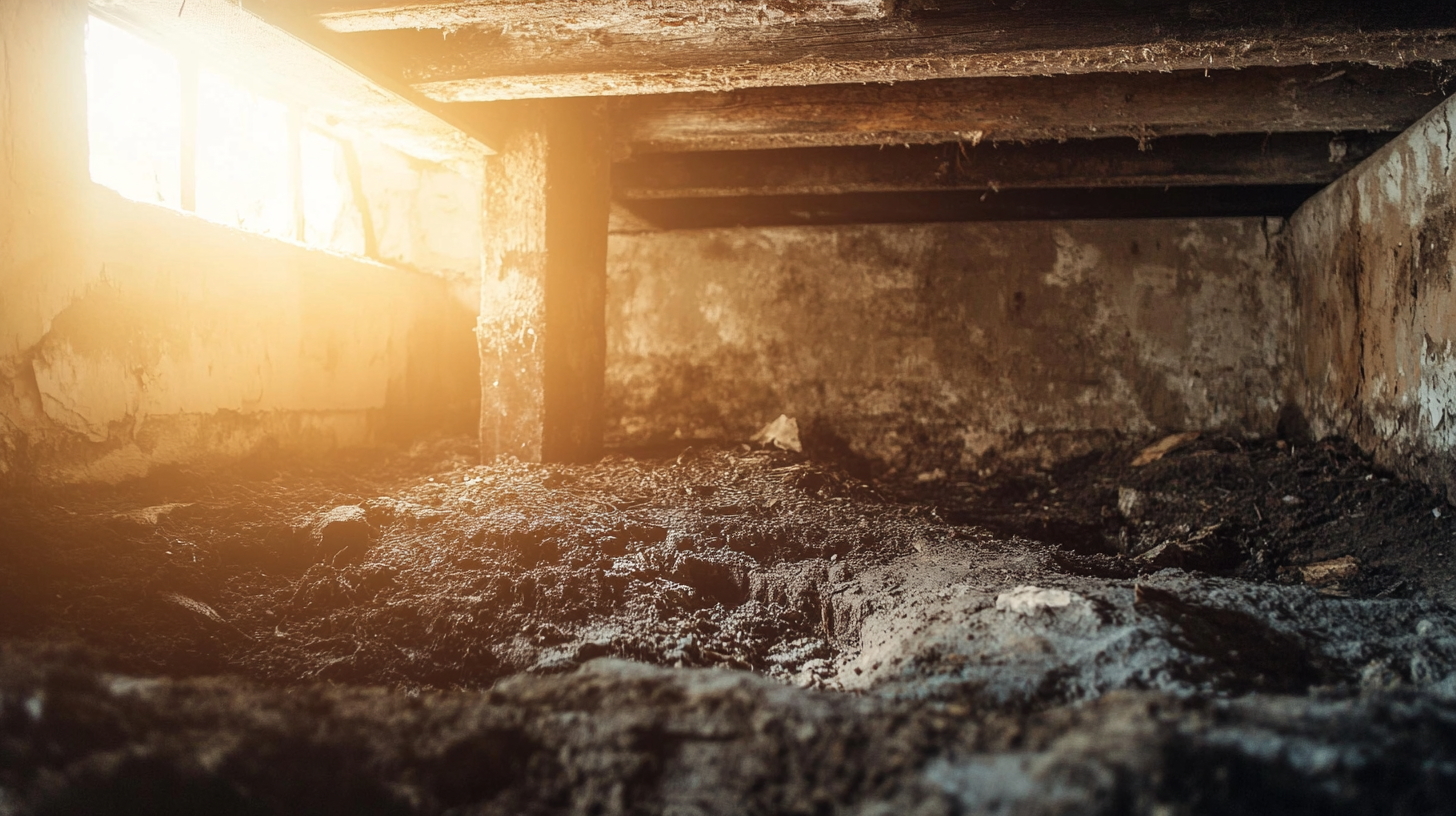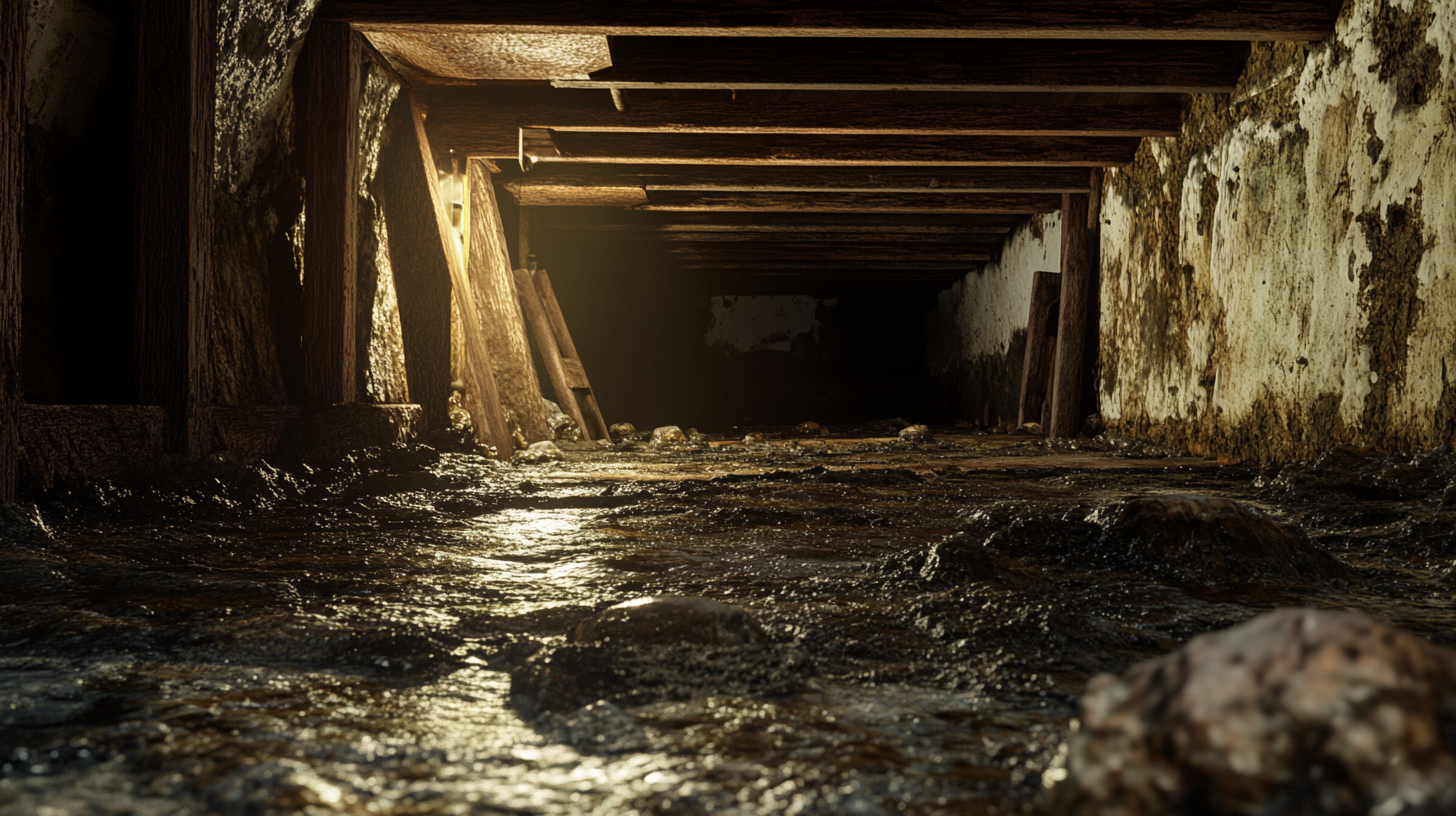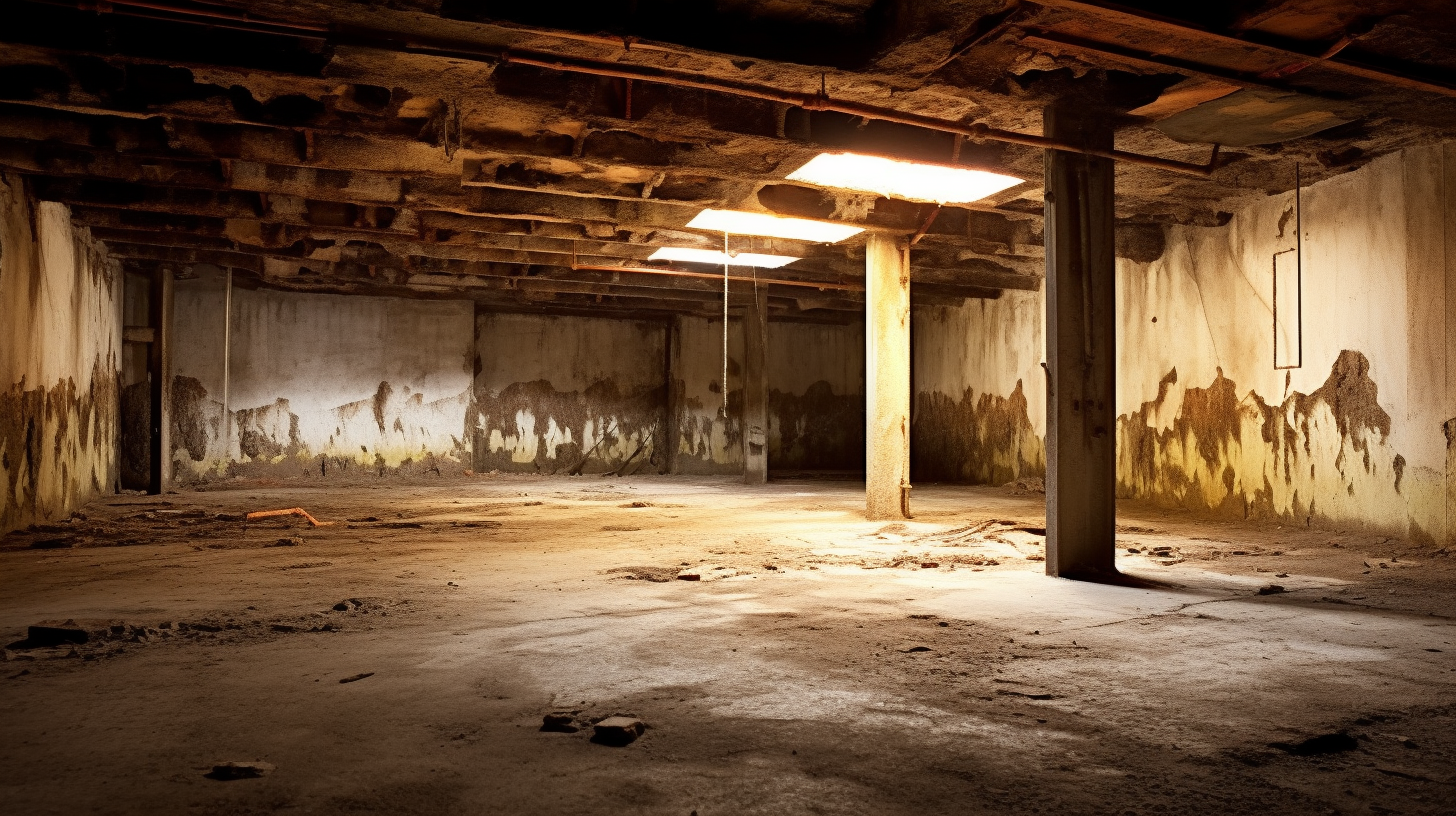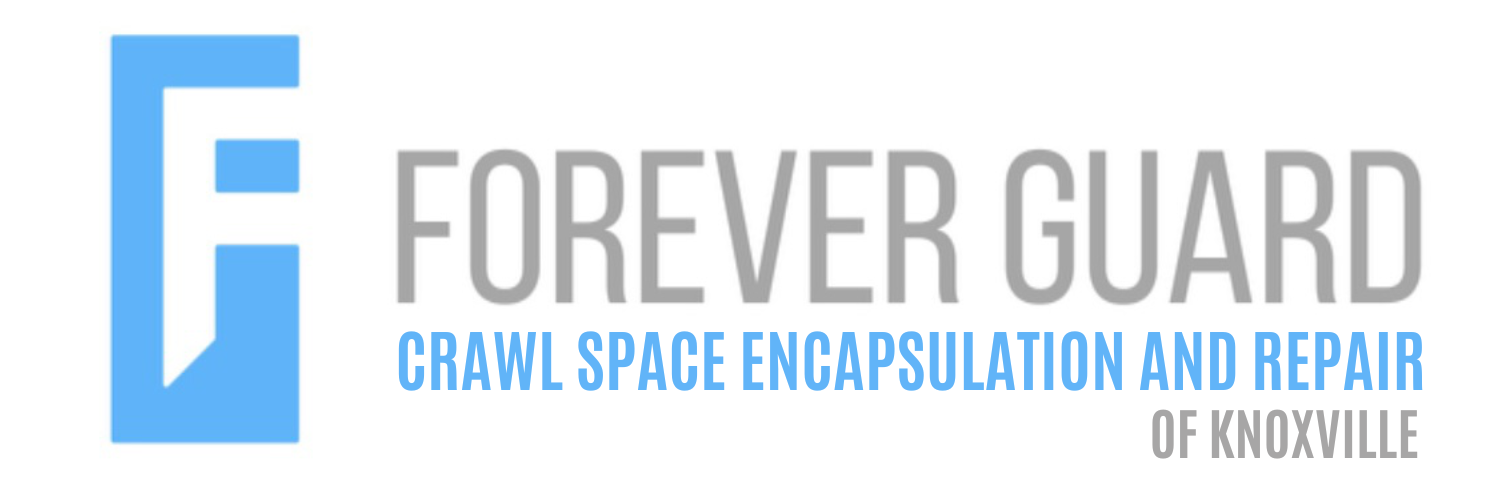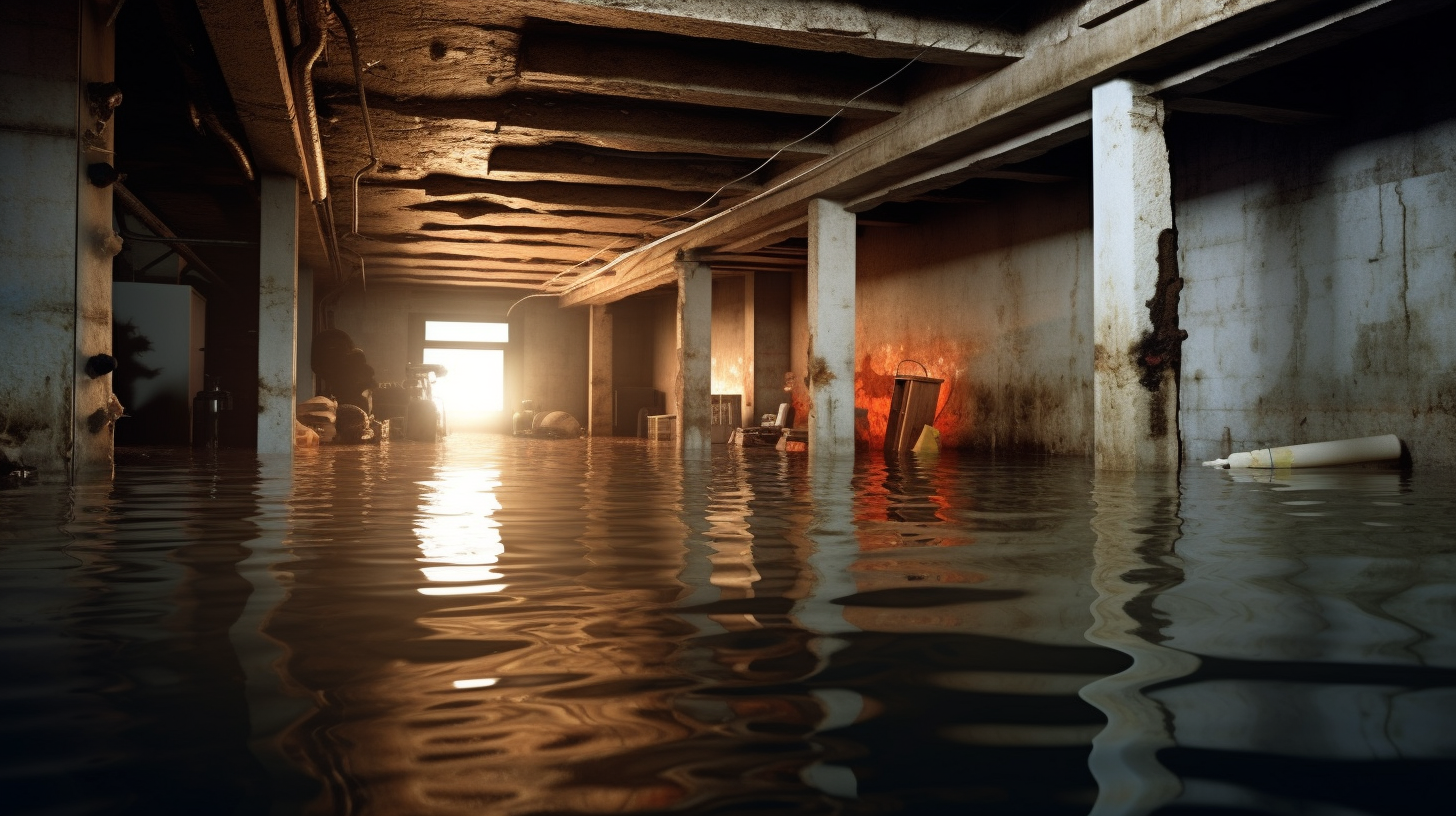Now IS THe Time To...

Crawl Space Services In Knoxville, TN
Stetson Howard: 865-432-6743
CRAWL SPACE ENCAPSULATION, REPAIR, WATERPROOFING & MOLD REMOVAL
No-Obligation, Free Inspections
No-Obligation Free Estimates
We Warranty All of Our Work
100% Satisfaction Guaranteed
Waterproofing is a critical component in construction that directly impacts the durability and safety of a building. Without proper waterproofing, structures are highly susceptible to water damage, leading to leaks, mold growth, and long-term structural deterioration. Water infiltration can weaken foundations, compromise insulation, and damage essential building materials, resulting in costly repairs and potential safety hazards. By implementing effective waterproofing measures, whether during new construction or as part of ongoing maintenance, builders can protect the integrity of a structure, ensuring that it remains resilient against environmental elements. Proper waterproofing not only extends the lifespan of a building but also enhances its overall stability, safeguarding it from the harmful effects of water exposure.
What is Cementitious Waterproofing?
Definition and Overview
Cementitious waterproofing is a widely used method that involves applying cement-based compounds to create a strong, water-resistant barrier. The waterproofing material is typically applied in the form of a slurry or coating, which hardens into a protective layer that prevents water infiltration. This method is especially effective on concrete and masonry surfaces, as it forms a rigid, impermeable layer that helps protect structures from water damage.
Key Features of Cementitious Waterproofing
- Composition: Cementitious waterproofing is made from a combination of cement, sand, and specially formulated waterproofing agents. These ingredients work together to create a solid, water-resistant barrier that adheres strongly to surfaces.
- Application: The material is usually applied with a brush, roller, or trowel directly onto the surface. Its ability to bond tightly with concrete and masonry makes it ideal for both new constructions and repair projects. Once applied, it quickly penetrates the surface and hardens to form a tough, seamless layer of protection.
- Durability: After curing, cementitious waterproofing becomes a rigid and long-lasting barrier. While it may not offer flexibility like some other waterproofing methods, its strength and durability make it highly effective for surfaces that don’t experience significant movement or expansion.
Common Uses of Cementitious Waterproofing
Cementitious waterproofing is commonly used in interior applications where consistent moisture or water exposure is a concern. It’s ideal for areas like basements, bathrooms, and water tanks, where water resistance is critical. This method is also widely used for external structures, including foundations, retaining walls, and underground structures that are subject to constant hydrostatic pressure. Its ease of use and affordability make it a popular choice for both commercial and residential waterproofing projects.
What is Bituminous Waterproofing?
Definition and Overview
Bituminous waterproofing is a popular method that uses bitumen, also known as asphalt, as the primary material for creating a waterproof barrier. This type of waterproofing is available in both liquid and sheet forms, offering flexibility and durability when applied. Bitumen forms a strong, water-resistant coating that effectively protects structures from water infiltration, making it an ideal solution for both residential and commercial buildings.
Key Features of Bituminous Waterproofing
- Composition: Bituminous waterproofing materials are primarily composed of bitumen, a tar-like substance known for its viscosity and water-resistant properties. To enhance durability and flexibility, polymers are often added to the bitumen mix, giving the waterproofing material extra strength and making it more resistant to environmental stress.
- Application: Depending on the project requirements, bituminous waterproofing can be applied either as a self-adhesive sheet or as a liquid coating. The sheet form is often used for larger surfaces, while the liquid form allows for seamless application on irregular surfaces or hard-to-reach areas. Both forms provide effective coverage and long-lasting protection against moisture.
- Durability: One of the key strengths of bituminous waterproofing is its flexibility. It is designed to expand and contract with temperature changes, ensuring that the waterproof barrier remains intact even in fluctuating weather conditions. This makes it an excellent choice for a wide variety of climates, from hot to cold environments.
Common Uses of Bituminous Waterproofing
Bituminous waterproofing is widely used in both residential and commercial construction, particularly for flat and low-slope roofs where water tends to pool. Its ability to withstand heavy rain and exposure to groundwater makes it ideal for foundation waterproofing as well. Whether protecting rooftops or preventing water intrusion into basements and foundations, bituminous waterproofing is a reliable and cost-effective solution for areas with high moisture levels.
Key Differences Between Cementitious and Bituminous Waterproofing
Flexibility
- Cementitious Waterproofing: Once cured, cementitious waterproofing forms a rigid and inflexible barrier. This makes it ideal for applications where the structure is stable and does not experience significant movement, such as in interior areas like basements or water tanks. However, it may not perform well in environments where expansion and contraction are common, as its rigidity can lead to cracking over time.
- Bituminous Waterproofing: In contrast, bituminous waterproofing is highly flexible and designed to expand and contract with temperature fluctuations and structural movements. This flexibility makes it particularly suited for external applications like roofs, where the structure is exposed to environmental changes and movement. Bituminous waterproofing ensures that the protective barrier remains intact even under dynamic conditions.
Application Method
- Cementitious Waterproofing: Typically applied as a thick slurry or coating, cementitious waterproofing is brushed, rolled, or troweled onto surfaces. It bonds well with concrete and masonry, making it a common choice for interior applications like walls, floors, and water-retaining structures. Its straightforward application process and water-resistant properties make it a go-to solution for internal waterproofing needs.
- Bituminous Waterproofing: Bituminous waterproofing offers multiple application methods depending on the project. It can be applied as self-adhesive sheets, hot-applied liquid, or spray-on coatings. These versatile application options make bituminous waterproofing suitable for roofs, foundations, and other exterior surfaces, providing flexibility to match the needs of different surfaces and conditions.
Resistance to Water Pressure
- Cementitious Waterproofing: Cementitious waterproofing excels in resisting constant water pressure, which is why it’s often used in water-retaining structures like dams, tanks, and swimming pools. Its ability to form a robust, impermeable barrier makes it a reliable solution for environments exposed to consistent water pressure.
- Bituminous Waterproofing: While bituminous waterproofing is highly effective in resisting moisture and water seepage, it is particularly beneficial for flat or low-slope roofs, where water tends to pool. Its ability to handle prolonged exposure to standing water ensures reliable waterproofing for roof surfaces and foundations.
Durability and Lifespan
- Cementitious Waterproofing: Known for its long-lasting durability in stable environments, cementitious waterproofing can provide years of protection when applied correctly. However, in areas prone to structural movement or environmental stress, the material may crack over time, which can reduce its effectiveness.
- Bituminous Waterproofing: Bituminous waterproofing is more resistant to environmental factors such as UV rays, temperature changes, and mechanical stress. Its flexible nature allows it to last longer in dynamic conditions, making it an excellent choice for roofs and areas subject to frequent environmental changes.
Maintenance Requirements
- Cementitious Waterproofing: Once applied, cementitious waterproofing requires minimal maintenance, making it a low-maintenance option for internal applications. However, any cracks or damage that develop over time due to movement or pressure may need repair to maintain its integrity.
- Bituminous Waterproofing: Bituminous waterproofing requires regular inspections and maintenance, especially in areas exposed to extreme weather, such as flat roofs. UV exposure and temperature fluctuations can cause gradual wear, so routine upkeep is essential to prevent deterioration and ensure the material’s long-term performance.
Pros and Cons of Cementitious Waterproofing
Pros
- Easy to apply with standard tools: One of the main advantages of cementitious waterproofing is its ease of application. It can be applied using common tools such as brushes, rollers, or trowels, making it a practical option for many construction projects. Additionally, it requires minimal specialized training, allowing contractors and even DIY homeowners to use it effectively for interior waterproofing jobs.
- Provides a rigid, durable barrier: Once cured, cementitious waterproofing forms a solid, impermeable barrier that is highly durable. This makes it ideal for interior waterproofing applications where long-term water resistance is needed, such as in basements, bathrooms, and water tanks. The material bonds tightly to concrete and masonry surfaces, offering reliable protection against water intrusion.
- Resistant to high water pressure: Cementitious waterproofing is particularly effective in areas where structures are exposed to constant water pressure, such as dams, swimming pools, and water-retaining structures. Its ability to resist water under pressure makes it a go-to solution for projects that require strong and durable waterproofing in areas prone to water buildup.
Cons
- Lacks flexibility: Despite its many strengths, cementitious waterproofing has a significant limitation in its lack of flexibility. Once hardened, it becomes a rigid barrier that cannot adapt to structural movement or shifts. This lack of flexibility makes it prone to cracking if the underlying structure moves or expands due to temperature changes or settling.
- Not suitable for areas with temperature fluctuations: Cementitious waterproofing is not ideal for environments exposed to extreme temperature variations. As it lacks the ability to expand or contract with the structure, it may crack when subjected to frequent or significant temperature changes. This makes it less effective for external applications where flexibility is required to cope with dynamic environmental conditions.
- Limited use in exterior applications: While highly effective for internal waterproofing, cementitious waterproofing is generally unsuitable for exterior surfaces, especially in areas that experience frequent movement or stress. Its rigidity makes it less reliable for roofing, foundations, or any outdoor applications where flexibility is needed to accommodate structural shifts or temperature fluctuations.
Choosing the Right Waterproofing Method for Your Project
Consider the Application Area
When selecting a waterproofing method, the area where it will be applied plays a critical role in determining the best option. Cementitious waterproofing is better suited for interior areas such as bathrooms, basements, and water tanks, where its rigid and durable nature is ideal for providing long-term protection in stable environments. On the other hand, bituminous waterproofing is ideal for exterior surfaces like roofs and foundations, where exposure to the elements requires a more flexible, weather-resistant material.
For areas exposed to high water pressure, such as tanks, swimming pools, or water features, cementitious waterproofing is the preferred choice because of its ability to form a strong, impermeable barrier that can withstand continuous water pressure. In contrast, bituminous waterproofing is better suited for areas with less pressurized environments, such as flat roofs or foundations, where water tends to pool but pressure is not as intense.
Flexibility and Structural Movement
Structural movement and environmental shifts are important factors to consider when choosing a waterproofing solution. For areas prone to ground movement, temperature changes, or structural shifts, bituminous waterproofing is the superior choice due to its flexibility. Bituminous materials can expand and contract with the building, ensuring that the waterproofing layer remains intact and effective despite external forces.
In more stable environments where movement is minimal, cementitious waterproofing offers a long-lasting, crack-resistant solution. Its rigidity provides reliable protection for areas where structural shifts are less of a concern, making it ideal for use in basements, bathrooms, and other interior spaces where flexibility is not required.
Climate and Environmental Factors
The climate and environmental conditions of your project’s location play a key role in determining which waterproofing method will perform best. In regions with extreme temperature changes or high UV exposure, bituminous waterproofing is the more durable option. Its ability to withstand temperature fluctuations and resist UV damage makes it ideal for exterior applications such as roofs, where prolonged exposure to the elements is a concern.
For projects in temperate climates with minimal structural stress, cementitious waterproofing is a reliable choice, particularly for indoor applications. Its durability and resistance to water pressure make it effective in environments where extreme weather and frequent temperature changes are not a major concern.
Budget and Maintenance Considerations
Budget and maintenance needs are important factors when selecting a waterproofing method. Cementitious waterproofing is often more cost-effective for smaller, simpler projects. Its straightforward application process and minimal maintenance requirements make it an attractive option for homeowners and contractors working on interior projects. Once applied, cementitious waterproofing generally requires little upkeep, making it a low-maintenance solution for long-term protection.
In contrast, bituminous waterproofing may have higher upfront costs due to the materials and more complex installation process, especially for large exterior surfaces. However, its flexibility and durability in dynamic conditions often provide better long-term performance. While bituminous waterproofing requires regular inspections and maintenance, especially in areas exposed to UV rays and temperature changes, its ability to handle environmental stress can result in cost savings over time due to fewer repairs or replacements.
FAQs
Recent Blog Posts
Crawl Space News
